
POWERED. The JEG Tower grid-tied solar project is expected to produce 77 MWhr of energy annually while avoiding 30 metric tons of carbon dioxide emission each year. / CONTRIBUTED

POWERED. The JEG Tower grid-tied solar project is expected to produce 77 MWhr of energy annually while avoiding 30 metric tons of carbon dioxide emission each year. / CONTRIBUTED

In today’s work culture, many people tend to overwork themselves to the point that they forget about their wellbeing. This type of lifestyle can be hazardous to one’s health both mentally and physically, and could eventually lead to burnout.
The best way to combat these problems would be having a pastime that could help clear your mind, however picking one can be overwhelming and is difficult to fit into one’s packed schedule. Why not try Yoga? Yoga is a holistic way to work out and relieve your mind, body, and spirit, and the best part about it is that anybody can do it regardless of age or fitness level.
Here are some of the benefits of practicing yoga:
A Workout to Unwind
Unlike other forms of exercise that require specific equipment or fitness level, all you need to start your yoga journey is yourself and a calm place where you feel comfortable. The main objective of yoga is to relax one’s body, mind, and spirit through a series of breathing, poses, and chanting exercises. By incorporating yoga into your daily routine, you will be able to de-stress, refresh yourself, and keep your heart healthy.
Improves Your Mental Health
Whenever you feel stressed out and need to take a breather, yoga can help clear your mind. Studies have shown that yoga can help improve one’s mental health. Yoga can boost your endorphins, pumping more oxygenated blood to your brain, which improves and sharpens your senses. Practicing yoga is also known to improve your serotonin levels which are your hormones responsible for balancing your mood levels.
Keeps You in Shape
When doing yoga poses, you slowly stretch into your chosen position and hold that pose, accompanied by deep breathing practices. This can help warm up your muscles, and through consistent practice, you will be able to improve your strength, flexibility, and balance.

Connects you to a Community
Not only can yoga freshen up your body, mind, and spirit, it also lets you be part of a big supportive community. Last September 8, JEG tower held an outdoors yoga session at its roof deck garden. Making use of the roof deck’s spacious area and relaxing scenery, the yoga session was joined by practitioners and newcomers alike, all with the goal of promoting wellness and a healthier lifestyle. Joining a yoga session is a fun way to connect with people and make friends, all while developing a healthier lifestyle.
Host your outdoor activity at JEG’s roof deck garden! For future events or inquiries about the building, reach out to Alexa Abella at (+63) 917-825-6884. Learn more information about the best place to work in Cebu City! Send an email to jegtower@kmcmaggroup.com today!
People are social beings. After two years of lockdowns and strictly imposed physical distancing, events and social gatherings are slowly going back and begin again in the new normal. As more people get vaccinated and restrictions begin to loosen, more become less afraid of being surrounded by other people, their family, and friends.
Luckily, there are steps event organizers can take to ensure events can be possible and safe in the post-pandemic world. There are many considerations to keep in mind when it comes to planning a safe event post-pandemic. Here are the top 3 reasons why hosting your event outdoors is ideal in the new normal:
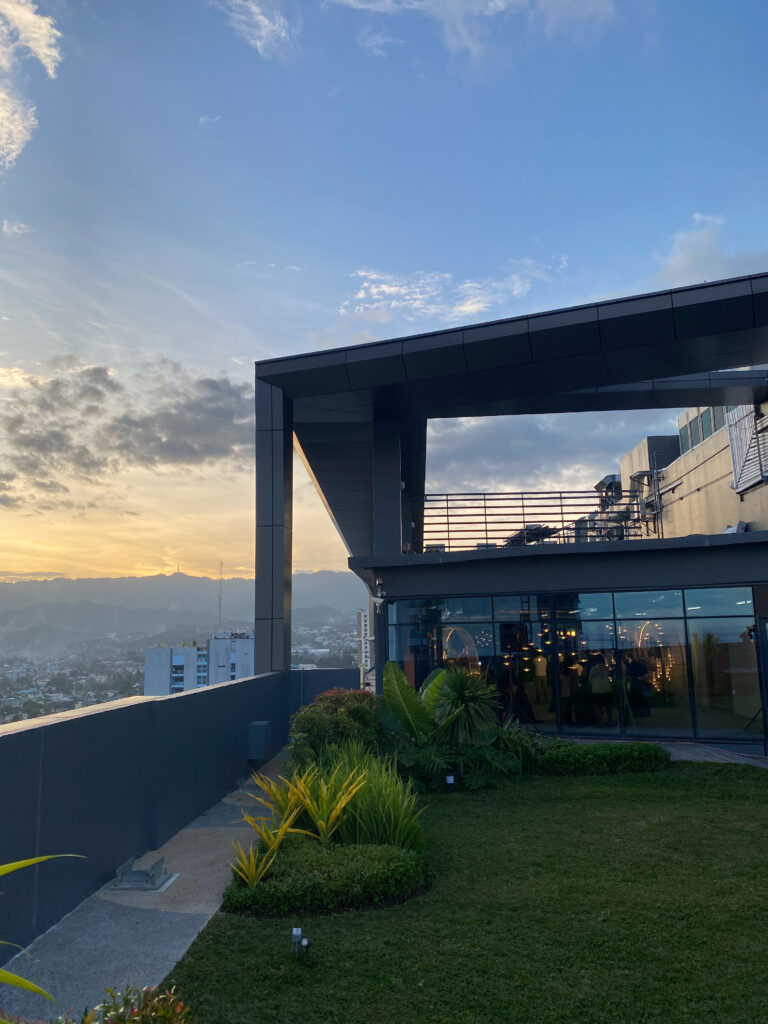
Open, Fresh Air
Events held in an outdoor space can minimize risks in virus spread. When you’re outdoors, fresh air is constantly moving and flowing, dispersing respiratory droplets that are identified to be the primary way the virus is passed. Outdoors, event goers are less likely to breathe in enough of the respiratory droplets containing the virus.
Ample Space for Social Distancing
During the peak of the pandemic in 2020, the Centers for Disease Control and Prevention (CDC) issued guidelines on physical distancing. Two years ago, when no public events were organized, it was recommended to have at least 6 feet distance between people in the same location.
However, as more people get vaccinated, the CDC no longer requires that much distance. The updated guidelines, issued in August 22, emphasized that physical distance is just one component of how to protect yourself and others.”
“It is important to consider the risk in a particular setting, including local COVID-19 Community Levels and the important role of ventilation, when assessing the need to maintain physical distance,” the CDC states.

Less Suppliers, Less Risk
Holding your event outdoors reduces the need to get more suppliers for styling and décor. This means less people to interact with prior to the event and less people to be present during the event. Having the natural scenery be the backdrop of your event can also lead to reduced cost in organizing, without compromising aesthetic and experience for your guests.
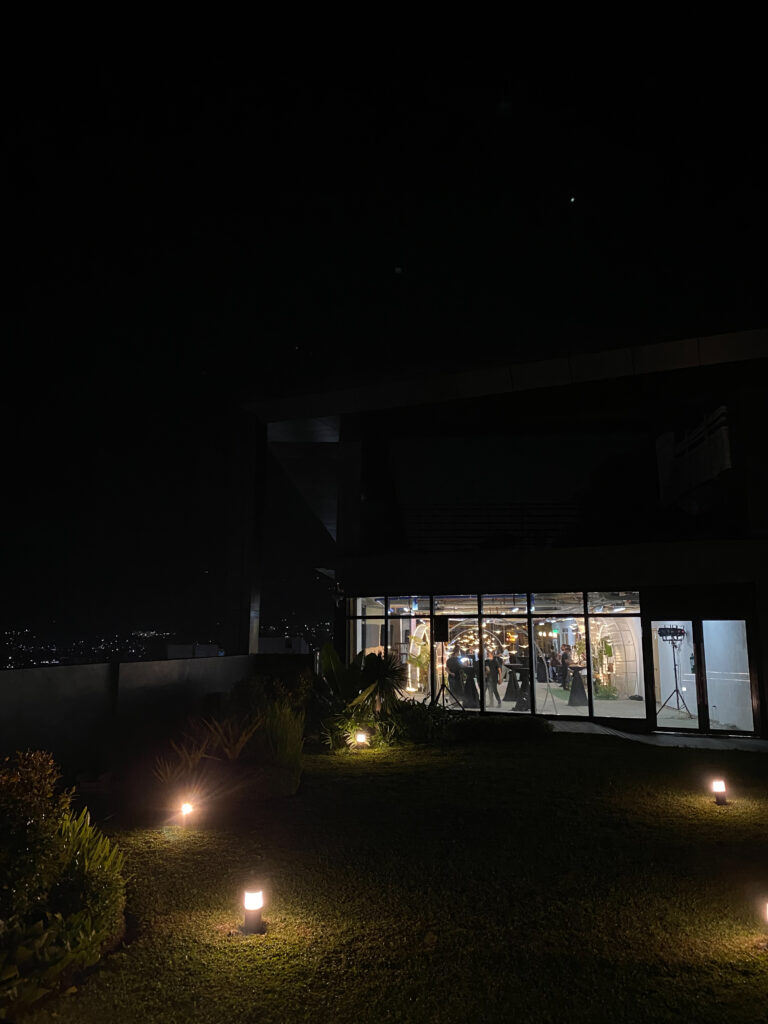
JEG Tower @ One Acacia, Cebu City’s newly launched premium green building, opens its garden rooftop and topmost floor for events and functions. The 22nd floor of this skyline crown jewel offers a generous view of the province’s mountain ranges and surrounding seas. With its strategic location in the gateway of Metro Cebu, it also offers a view of the city’s skyscrapers at night.
For reservations or inquiries about the space, reach out to Alexa Abella at (+63) 917-825-6884. Learn more information about the best place to work in Cebu City! Send an email to jegtower@kmcmaggroup.com today!
One of the most crucial factors when looking for an office space is the size needed for your business to operate. When leasing a workplace, there is no one size fits all or a definitive figure applicable for everyone.


Each company varies in the amount each company varies in the amount of office space they need. However, by providing a comfortable space for your employees, offering safe shared spaces, having a venue to practice your company’s culture, and preparing for the future, you will have an idea of which office space is perfect for your business.
JEG Tower @ One Acacia accommodates companies that need small (93-215 sq m) to large (1,170-1,179.02 sq m) office spaces in the heart of Metro Cebu. Schedule a viewing today! Contact Alexa Abella at (+63) 917-825-6884. For inquiries and more information, call us at (+63) 2-8403-5519 or send an email to info@kmcmaggroup.com.
Office and design trends change and adapt over time. However, one constant feature of a workplace is its impact on the health and well-being of employees. As people spend almost a third of their lifetime inside office spaces, people begin to realize and put greater value in choosing a space that puts their wellness on top.
Numerous research has successfully linked space to the health of its occupants. The American Psychological Association (APA) reported in a journal that a healthy workplace should include five components: work-life balance, health and safety, employee growth and development, employee recognition, and employee involvement.


Physical Well-being
Businesses can provide a healthy workplace by ensuring that the physical work environment is set to the highest industry standards and criteria. An ideal physical work environment ensures that the design and layout of the workplace is optimal for the comfort, productivity, and motivation of its employees.
Providing optimal indoor air quality is also a crucial task for workspaces, especially in the new normal. Aside from disease prevention, fresh and clean indoor air can also improve cognitive function and reduce anxiety to employees.
Office spaces that also encourage movement and exercise can also improve the physical health of their occupants.
LEED-certified Buildings for Holistic Health
Workplaces located inside a LEED-certified building are linked to improved productivity, increased output, and better work performance. The same study also found that the indoor air quality of their work environment contributes to its employees’ fulfillment at work and overall mood during office hours.
The US Green Building Council (USGBC) found that potential employees prefer working in an office located in a LEED-certified building, where their health and well-being are considered to be top priority. The same study found that workers based in a LEED-certified green building are found to be more satisfied with their job, and that 79 percent of the respondents agree that they would choose a job in a LEED-certified building over a non-LEED building.
Bound by its commitment to uplift People, Planet, and Profit, Leadership in Energy and Environmental Design (LEED) certified buildings are designed and built to promote the overall health and well-being of its occupants while leaving the least negative impacts to the environment.
LEED-certified buildings such as JEG Tower @ One Acacia have observed the highest set of standards to ensure the overall comfort and safety of its occupants. JEG Tower is designed and built to promote their physical and mental health.
As the highest-scoring LEED commercial development in Cebu City, this 22-storey tower ensures that the workplace design does not compromise the safety, security, and functionality of the space. Instead, it adds value to the often-overlooked aspect of design, which is to promote holistic wellness to its occupants.
Want to learn more about JEG Tower @ One Acacia? Contact Alexa Abella at (+63) 917-825-6884. For inquiries and more information, call us at (+63) 2-8403-5519 or send an email to info@kmcmaggroup.com.
The office remains one of the most important aspects of business. In Gensler’s Workplace Index, four key areas in an office space were identified that employees need: a space to focus, collaborate, learn, and socialize. Additionally, factors such as lighting, functional space, and equipment can also affect their efficiency and motivation at work.
An office can also cultivate company culture and exude company branding. In fact, the workplace is one of the endemic ways a company communicates its essence to its clients, investors, and future employees. While a company’s identity and culture are not made up of tangible factors, research suggests that factors affecting an office space such as interior design, architecture, etc. can influence or even change an organization’s culture. Here are a few things to consider when choosing your business address:
Client & Employee Convenience
Location plays an important role in choosing the best business address. It needs to be easily accessible to local commuters and your clients, but it should also be in a building or neighborhood that offers desirable amenities for your employees.
Most companies prefer locating inside central business districts for its proximity to key establishments and ease of access. JEG Tower @ One Acacia, Cebu City’s newest premium green building, is accessible through one of the metro’s main thoroughfares, Archbishop Reyes Avenue. It is also strategically located at the gateway of Cebu IT Park and Cebu Business Park.
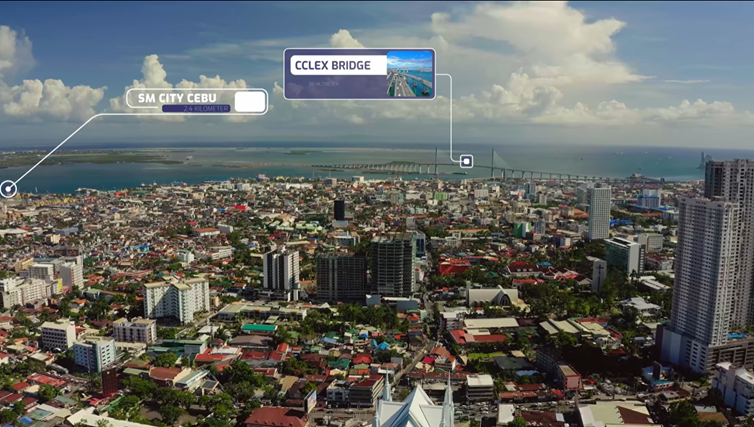

Cycling is a good way of practicing sustainability in daily life. As a form of exercise, an alternative mode of transportation, and a shared activity, riding a bicycle to and from your destination can benefit your health, the environment, and the whole community.

JEG Development Corporation (JDC) has always been an advocate for cycling, emphasizing its benefits to their tenants’ health, the environment, and the community. As the world marks this year’s International Bike to Work Day, JDC promotes the key benefits of riding bicycles to and from the workplace.
Here are some benefits of cycling:
Health
Riding a bicycle regularly can help build and strengthen muscle, eliminate fat, lower blood pressure, and increase endurance. Many studies have proven the effectiveness of this form of workout in improving the overall well-being of individuals, having significant effects on both the physical and mental health of individuals.
Cycling can improve employees’ moods and help them have a positive start in the morning before they clock in for work. In fact, one study showed that employees who bike to work are more inclined to make healthy decisions throughout the day.
Moreover, riding a bike to work can ease feelings of stress, depression, or anxiety, which takes care of one’s mental health. It can also lead to improved cognitive function, better focus, and increased productivity.

Environment
Cycling to work helps push forward sustainable transport. As an alternative mode of transportation to the workplace, it can lessen the need for cars and vehicles daily that severely contributes to air pollution and emissions of smog.
Opting to use your bicycle a few times a week, instead of your car, is one of the simplest ways to lower your environmental footprint.
RELATED: Cycling to Work: The Benefits of Sustainable Transport
As more people shift to cycling, the demand for safer bike lanes is also pushed forward. During the height of the pandemic back when there were limited transportation options, cycling advocates in the Philippines have called for fund allocation of at least 16 million dollars from the government to build 190 miles of bike lanes to protect riders. Through this initiative, there will be less demand for roads and expansion, but increased opportunities for less concrete and more green spaces in urban areas.
Community
Cycling can significantly improve a community through public health and safety. Active transportation such as riding a bicycle can collectively improve public health and lower healthcare costs. More bikes on the road can mean fewer cars which can lead to a safer road environment.
Through its newest premium green building, JEG Tower @ One Acacia, JDC shows its support for a more sustainable option for its employees’ transport. The 22-storey office and retail tower offers bike racks on its parking floors for convenience and efficiency. Shower rooms are also provided for them to freshen up before coming to the workplace.
As part of its commitment to promoting holistic health and sustainability in Philippine real estate, JDC encourages more employers and developers alike to provide more options for their tenants. More than healthier and safer office spaces, JEG Tower @ One Acacia also looks after the community for the overall promotion of sustainable practices in Cebu City.
Join the sustainable shift and make your move to the best and greenest workplace in Cebu. Contact Gerold Fernando at (+63) 917-565-3547 to schedule a viewing today! For leasing inquiries and more information, call us at (+63) 2-8403-5519 or send an email to jegtower@kmcmaggroup.com.
As the world recovers from the economic impacts of the pandemic and lockdowns, Cebu remains to be an attractive business location especially for multinational locators.
In its latest property report, KMC noted that commercial rents in Metro Cebu are beginning to stabilize and gradually improve as the sector transitions to the new normal. With a diversified real estate portfolio, impressive infrastructure, and ease of transport and access, local and foreign companies consider Cebu as its location for expansion.
Diversified Real Estate Portfolio
Metro Cebu’s main business districts, Cebu Business Park and Cebu IT Park are home to around 81,000 sq m of Grade A office spaces. Over the years, commercial developments have framed the Cebu City skyline, offering premium spaces for local and foreign business entities that want to relocate or expand outside Metro Manila and Luzon.
Among the newest premium green buildings to launch this year in Cebu City is JEG Tower @ One Acacia. This 22-storey development was recognized as the country’s Best Commercial Green Building in 2020 and is a certified LEED Gold.
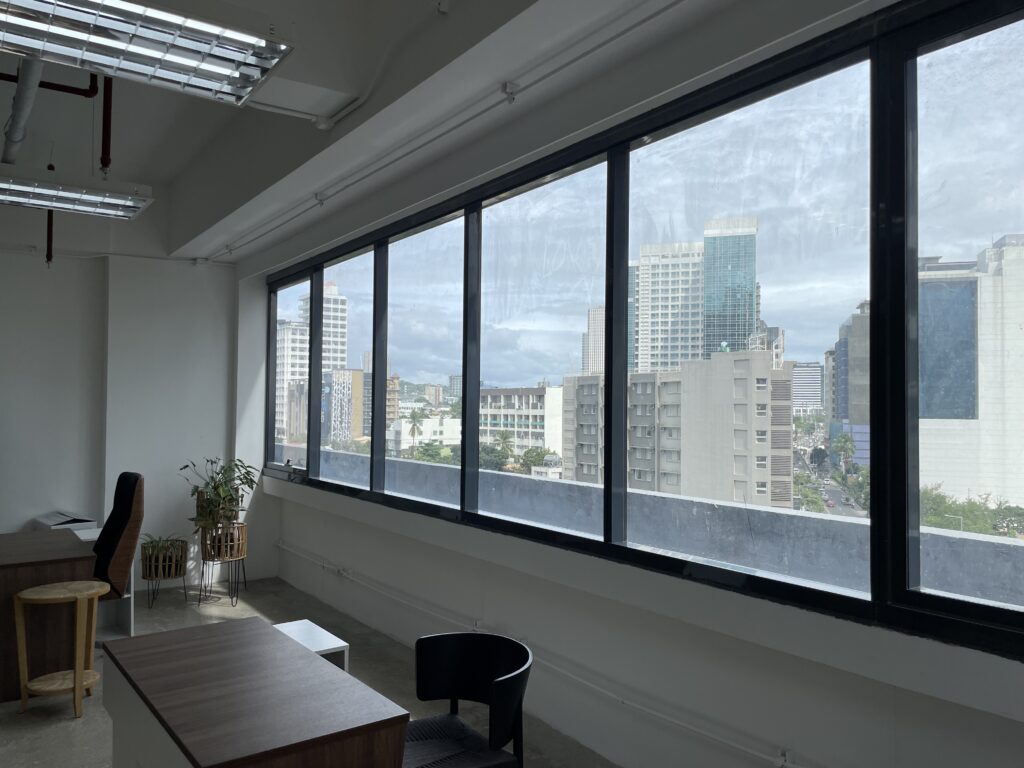
Impressive Infrastructure
The Cebu-Cordova Link Expressway (CCLEX) is expected to bring more economic growth and assist in the pandemic recovery of Cebu City and its neighboring areas as the local government anticipates its completion during the first quarter of 2022.
The 8.9-kilometer infrastructure project offers an alternative route for those coming from the Mactan-Cebu International Airport. It is the country’s largest water-crossing infrastructure, built with a navigational clearance to allow larger vessels to safely cross underneath the bridge.

Business leaders in Central Visayas have also expressed their optimism over the socio-economic benefits of CCLEX to the province and the whole region once it starts operating this year. Both local business leaders and multinational locators say the economic benefits that will enable Cebu to bounce back economically and start have ripple effects that will be felt across the Visayas.
READ MORE: CCLEX to aid economic recovery in Cebu in 1Q/2022
Ease of Transport & Access
The Mactan-Cebu International Airport is the main entry and exit point in Cebu City. This development is also the second busiest international airport in the Philippines that serves the majority of Metro Cebu and the Central Visayas region.
Its international terminal, Terminal 2, started operations in 2018 and has significantly increased the capacity of the airport to 12.5 million passengers per year. In 2019, the new design of this terminal won an award under the “Completed Buildings – Transport” at the World Architecture Festival.
Interested in expanding to the Visayas? Locate in the best place to work in Cebu City. Get in touch with Gerold Fernando at (+63) 917-565-3547 or send an email to jeg@kmcmaggroup.com for more details.
Discover how JEG Tower @ One Acacia revolutionizes work and life balance today.
On average, humans spend 90% of their time indoors. Now that the majority are returning to a ‘more normal’ way of living, many also go back to their traditional workspace. Numerous studies have proven the direct relationship between one’s living conditions and the spread of disease. From the quality of indoor air to the materials used inside buildings where people work and spend the majority of their day. The pandemic made people more conscious of their environment to protect themselves from diseases and viruses.
Even before the COVID-19 health crisis, green buildings have been advocating healthy spaces, especially in offices and commercial developments. By promoting sustainability and workplace wellness, these types of buildings prioritize energy efficiency, optimizing indoor air quality, resource conservation, and proper waste management.
Optimized Indoor Air Quality
Proper ventilation is critical to prevent the transmission of coronavirus pathogens. During the onset of the pandemic, the Centers for Disease Control and Prevention reported that viral pathogens can linger in indoor air for at least eight minutes. Furthermore, a study University of Cambridge warned that the use of mixed ventilation systems inside buildings may increase the risk of exposure to coronavirus.
“During coronavirus, nobody wants recirculated air in offices, gyms, and schools,” says Catriona Brady, head of Better Places for People at the World Green Building Council. The World Green Building Council aims to promote the construction of more sustainable buildings, providing measures and guidelines to commercial and residential developments around the world.
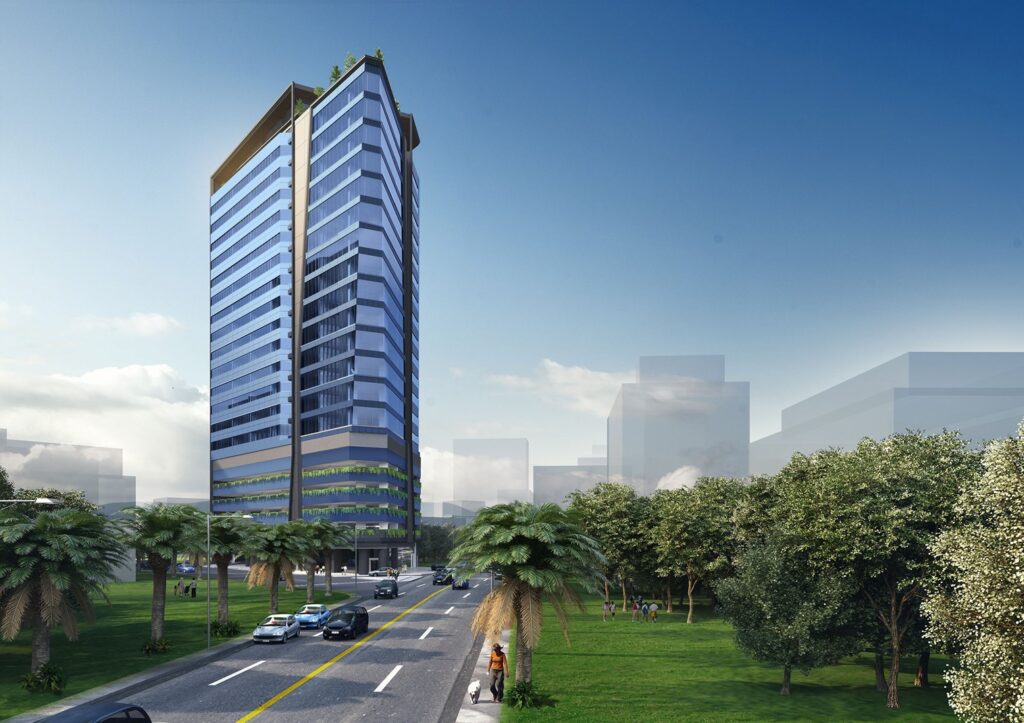
A pioneer sustainable building in Cebu City, JEG Tower @ One Acacia is a standout, premium green building in the Philippines. The 22-storey office and retail project was named Best Green Commercial Development in the Philippines for its unique and innovative features that ensure the best air quality inside its premises.
JEG Tower utilizes Minimum Efficiency Reporting Values or MERV filters that can capture particles in the air from 0.3 and 10 microns (µm). Higher value in MERV ratings leads to better filtration, fewer dust particles, and other airborne contaminants.
Even from its construction, the tower observed the Construction Indoor Air Quality (IAQ) Management Plan. This measure is implemented by LEED-certified buildings to protect its HVAC system during construction, control pollutant sources, and interrupt pathways for infection. It also guides the sequence of installation of materials to avoid contamination of absorptive materials such as insulation, carpeting, ceiling tile, and gypsum wallboard.
READ MORE: JEG Tower Focus: MERV and Fresh Air System for Optimal Indoor Air Quality
As the highest LEED-scoring development in Cebu City, JEG Tower puts a premium on ventilation and provides a safe working space for its tenants and occupiers.
“A green building is like a giant face mask,” says Dr. Ho Nyok Yong, president of the Singapore Green Building Council. This is definitely one of the considerations of employees in returning to the office in the new normal.
Non-toxic materials
Many construction materials, including paint, contain dangerous toxins that can cause significant effects on the health of people. Many types of paint contain the colorless gas formaldehyde, one of the most common volatile organic compounds (VOCs).
RELATED: Defining Sustainability: Casas+Architects discusses why it matters in design and construction
Formaldehyde is also found in many types of glue, adhesives, and sealants as well as certain types of foam insulation. The gas poses a serious risk to human health; it is carcinogenic and can cause both respiratory problems and skin irritation.
JEG Tower @ One Acacia used construction materials that are low in VOCs and other green materials that originate from nature rather than highly processed and synthetic options.

Green Buildings Save Lives
A recent study from Harvard University’s T.H. Chan School of Public Health found that people in cities with slightly higher levels of particulate matter (PM2.5) had higher death rates from COVID-19.
“We have research showing that air pollution, which in many parts of the world is coming from burning fossil fuels, is causing people to die from COVID 19,” says Dr. Aaron Bernstein, USGBC board chair and also the co-director of Harvard’s Center for Climate, Health and the Global Environment (Harvard C-CHANGE). “For people who are living in places with worse overall air quality, it [pollution] has set up their lungs to fall apart when they got sick.”
“Green buildings save lives because they rely less on energy for every square foot of the building,” he added. “They’re responsible for a lower share of air pollution.”
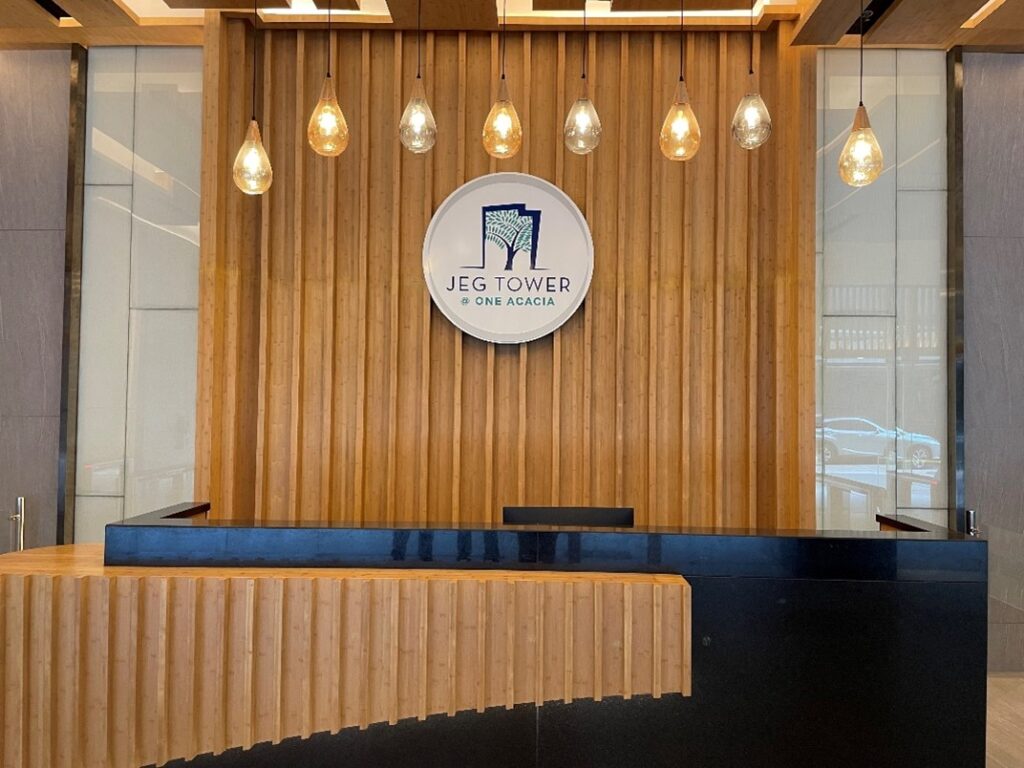
JEG Tower @ One Acacia revolutionizes work and life balance by providing a safe and healthy space for its tenants while advocating for their holistic wellbeing. The tower has been LEED-Gold certified for its outstanding commitment to energy efficiency and less negative impacts on the environment.
Learn more about how to lease in the best place to work in Cebu City. Contact Gerold Fernando at (+63) 917-565-3547 to schedule a viewing today!
Amid the celebration for World Water Day, several buildings are moving toward the development of greener and more sustainable buildings. In the Philippines, the shift to these kinds of premium real estate have proven to be more advantageous especially with the ongoing COVID-19 pandemic and the eventual return to office.
Beyond mere structures, sustainable architecture now taps into minimizing the negative impact of buildings on the economy and environment. According to reports, this is accomplished through efficiency and moderation in the use of materials, energy, water, development space, and ecosystem as whole.
This is the vision heralded in the recently completed JEG Tower @ One Acacia in Cebu. Apart from being at the forefront of renewable energy through solar panel installation, water efficiency and conservation is at the heart of the premium, award-winning green development.
The LEED Gold-certified tower has a rainwater collection system that increases the efficiency of water use in the building. In the data provided by the Innovative Water Solutions, rainwater system in buildings also reduce utilities costs and allocate treated water for more important use. It can also serve as a great backup water supply in emergency situations.

US Green Technology also reported that it is easy to maintain, can help with rainwater roof runoff and reduces groundwater contamination. It also has its many uses including being a source of irrigation for pocket gardens and other flora & fauna in the green building. JEG Tower @ One Acacia is one of the few buildings in the Philippines that transformed their topmost floor into a green roof that provides ample spaces to unwind or get a breath of fresh air.
Other utilization for the rainwater collection system is to use it in the common bathrooms. JEG Tower uses recycled water in flushing toilets to lessen costs further as it is considered one of the top users of water in any building or the average household.
As water security in the Philippines become a more vital issue, real estate is one of the sectors that are eyed to be at the forefront of the sustainability shift. Workplaces become more ideal if they promote environmental conservation, feature top-grade amenities, and green features that offer healthier spaces to locators and tenants.
Locate your business in Cebu City’s newest premium green building. Contact Alexa Abella at (+63) 917-565-3547. For leasing inquiries and more information, send an email to jegtower@kmcmaggroup.com.